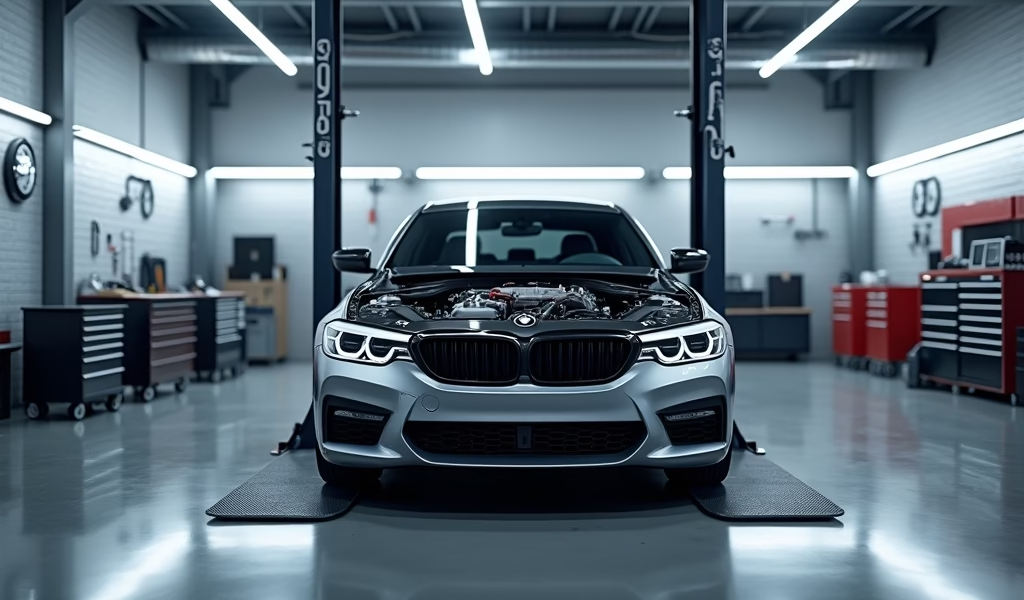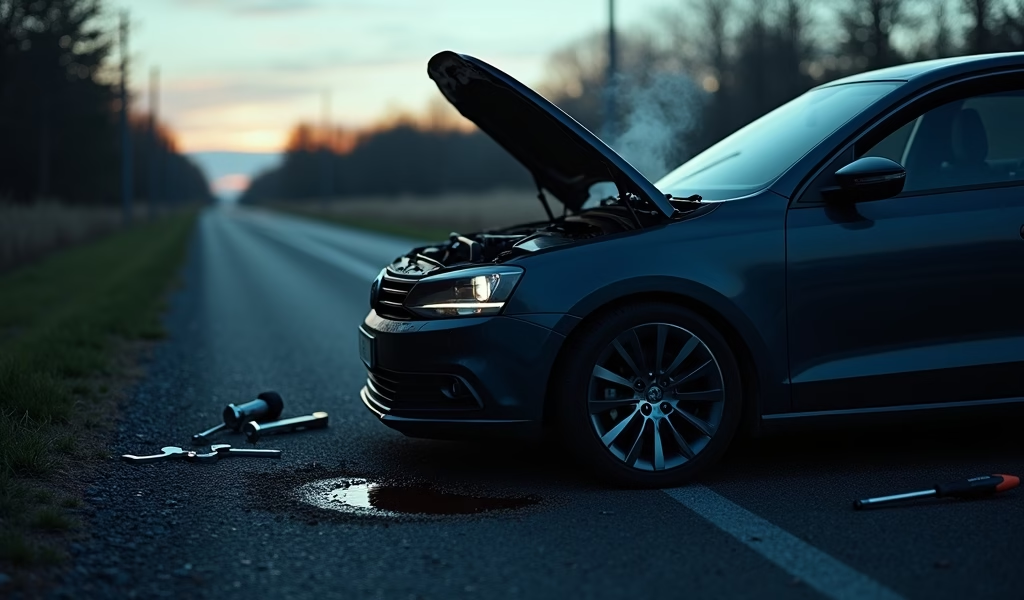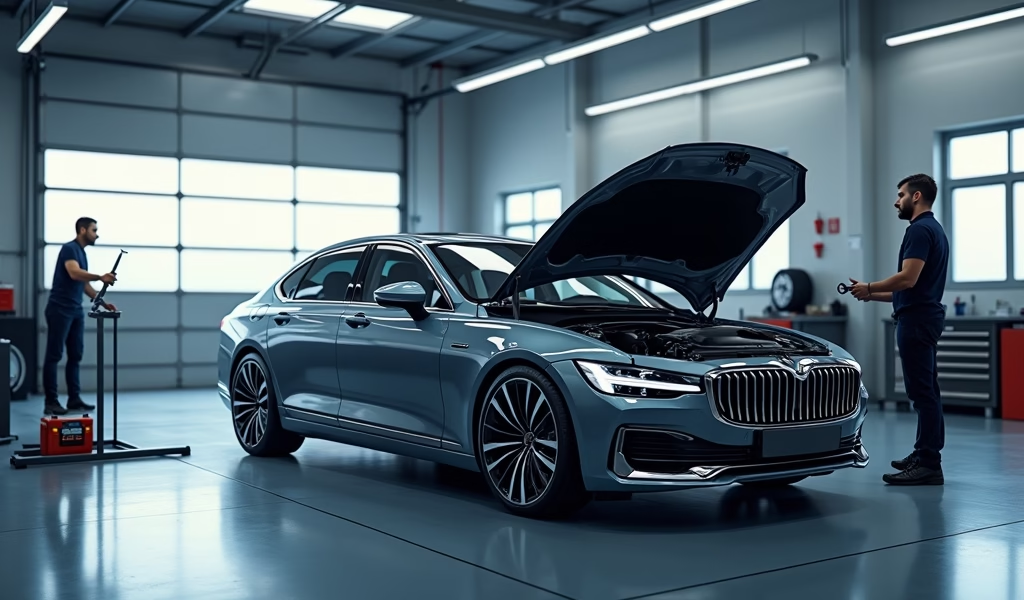Overview
This article outlines seven essential car maintenance practices that extend vehicle life and prevent costly repairs, including following the owner’s manual, regular oil changes, proper tire care, brake system checks, fluid monitoring, filter replacements, and battery maintenance. Regular upkeep not only prevents breakdowns but also preserves vehicle value, improves safety, and delivers significant long-term savings compared to the high cost of major repairs resulting from neglect.
Table of Contents
- Why Regular Maintenance Matters
- Following Your Owner’s Manual: Your Maintenance Bible
- Oil Change Frequency: The Lifeblood of Your Engine
- Tire Maintenance: Where the Rubber Meets the Road
- Brake System Checks: Safety First
- Fluid Checks and Replacements: Keeping Things Flowing
- Filter Replacements: Your Car’s Breathing System
- Battery and Electrical System Maintenance
- Conclusion: Investing in Your Vehicle’s Future
- Frequently Asked Questions
Why Regular Maintenance Matters
In my 25 years as a certified mechanic, I’ve seen it time and again: the difference between a 100,000-mile vehicle that runs like new and one that’s limping into the shop on a tow truck often comes down to one thing—how often car maintenance was performed. Regular maintenance isn’t just about preventing breakdowns; it’s about preserving your investment and ensuring your safety on the road.
Think of maintenance as preventive medicine for your car. Just as you wouldn’t skip your annual physical, your vehicle needs regular check-ups to catch small issues before they become expensive repairs. According to a study by AAA, neglected maintenance causes thousands of accidents yearly and leads to an average repair cost of $500-$600 more than regular upkeep would have cost.
The good news? You don’t need to be a gear-head to keep your car in top shape. With these seven proven maintenance tips, you’ll extend your vehicle’s life, improve safety, and save money in the long run. Let’s roll up our sleeves and dive in.
Following Your Owner’s Manual: Your Maintenance Bible
That thick booklet gathering dust in your glove compartment? It’s actually the most valuable resource for your car’s health. Your owner’s manual contains a maintenance schedule specifically designed for your vehicle by the engineers who built it.
Different vehicles have different needs. A high-performance sports car might need oil changes every 5,000 miles, while some newer models with synthetic oil can go 10,000 miles between changes. Your manual will spell out exactly when to service:
- Oil and filter changes
- Tire rotations
- Brake inspections
- Major service intervals (typically at 30,000, 60,000, and 90,000 miles)
- Timing belt replacement (a critical service often needed between 60,000-100,000 miles)
I’ve seen too many cars suffer premature transmission failure or timing belt breaks simply because their owners didn’t follow the manufacturer’s schedule. These catastrophic failures often cost thousands to repair—all preventable by following that little book’s guidance.
Pro tip: Take 10 minutes today to find your maintenance schedule in your manual and mark the upcoming service milestones in your calendar or phone. Your future self will thank you.

Oil Change Frequency: The Lifeblood of Your Engine
If there’s one maintenance item you shouldn’t skip, it’s regular oil changes. Engine oil is literally the lifeblood of your vehicle, lubricating the hundreds of moving parts in your engine and preventing them from grinding themselves to an early grave.
The age-old advice of changing your oil every 3,000 miles is outdated for most modern vehicles. Today, the schedule depends on several factors:
- Conventional oil: Generally every 5,000-7,500 miles
- Synthetic oil: Typically every 7,500-15,000 miles
- Driving conditions: Short trips, extreme temperatures, and dusty conditions require more frequent changes
- Vehicle age and model: Some newer vehicles have oil-life monitoring systems
How can you tell if your oil needs changing? Check the dipstick—fresh oil is amber and translucent. If it’s dark brown or black and you can’t see through it, it’s time for a change. Also listen for increasing engine noise or roughness, which can indicate old oil isn’t lubricating properly.
I recommend synthetic oil for most drivers. While it costs more upfront, synthetic oil protects better in extreme temperatures, reduces engine wear, and lets you go longer between changes. The math often works out in your favor when you factor in fewer service visits.
Tire Maintenance: Where the Rubber Meets the Road
Your tires affect everything from gas mileage to handling to safety, yet they’re often neglected until there’s a flat or blowout. Proper tire maintenance includes several components:
Pressure checks: Check your tire pressure monthly using a quality gauge. Underinflated tires wear faster, reduce fuel economy, and can overheat on the highway. The correct pressure isn’t what’s stamped on the tire—it’s listed on the driver’s doorjamb or in your manual.
Rotation: Have your tires rotated every 5,000-8,000 miles. This ensures even wear and can extend tire life by up to 20%. Front tires typically wear differently than rear tires, especially on front-wheel-drive vehicles.
Alignment: If your car pulls to one side or your steering wheel isn’t centered when driving straight, you likely need an alignment. Get your alignment checked annually or if you notice uneven tire wear.
Tread depth: Use the penny test—insert a penny into your tire’s tread with Lincoln’s head upside down. If you can see all of Lincoln’s head, your tread is too worn, and it’s time for new tires. Don’t wait—worn tires dramatically increase stopping distances, especially in wet conditions.
Most tires last 40,000-60,000 miles, but aggressive driving, poor alignment, or incorrect pressure can cut that lifespan in half. With new tires costing $400-$1,000+ per set, proper maintenance makes financial sense.
Brake System Checks: Safety First
No system in your car is more critical to your safety than your brakes. A complete brake inspection should happen at least once yearly, regardless of mileage, and more frequently if you drive in mountainous terrain or heavy traffic.
Your car will usually give you warning signs that brake service is needed:
- Squealing or grinding noises when braking
- Vibration or pulsation in the brake pedal
- Pulling to one side during braking
- Increased stopping distance
- Brake warning light illumination
Don’t ignore these symptoms! That grinding sound isn’t just annoying—it means your brake pads are completely worn, and metal is grinding against your rotors, causing expensive damage.
Typical brake service intervals include:
- Brake pad replacement: Every 30,000-70,000 miles (highly variable based on driving style)
- Brake fluid flush: Every 2-3 years regardless of mileage
- Brake rotor replacement: Usually every 70,000 miles or when they can’t be machined
If you’re comfortable checking your own brake pad thickness, look through the wheel spokes at the outboard pad (the one visible without removing the wheel). If it’s less than 1/4 inch thick, start planning for replacement soon.

Fluid Checks and Replacements: Keeping Things Flowing
Your vehicle relies on multiple fluids to operate properly, and checking them monthly can prevent expensive repairs. Here’s what to monitor:
Transmission fluid: Transmission fluid changes are often overlooked but critically important. Most vehicles need this service every 30,000-60,000 miles. Fresh fluid should be bright red and smell slightly sweet—if it’s brown, smells burnt, or has particles in it, it needs changing immediately.
Coolant/antifreeze: This prevents your engine from overheating in summer and freezing in winter. Have your cooling system flushed every 2-5 years depending on the type of coolant. Low coolant is the primary cause of overheating engines, which can lead to catastrophic damage.
Brake fluid: This hydraulic fluid transfers force from your brake pedal to your brakes. It should be changed every 2-3 years regardless of mileage because it absorbs moisture over time, lowering its boiling point and compromising braking performance.
Power steering fluid: Check the reservoir level monthly. If you notice a groaning noise when turning the wheel, particularly when cold, your power steering system may need attention.
Most fluid checks are simple. Open your hood, locate the reservoir or dipstick (your manual will show you where), and check the level and condition of the fluid. Many reservoirs have “MIN” and “MAX” lines for easy reference.
Filter Replacements: Your Car’s Breathing System
Your vehicle has several filters that keep contaminants away from critical systems. Replacing them regularly improves performance, fuel economy, and prevents damage.
Engine air filter: This prevents dust and debris from entering your engine. Replace it every 15,000-30,000 miles, or more frequently if you drive on dirt roads or in dusty conditions. A clogged air filter can reduce fuel economy by up to 10%.
Cabin air filter: This filters the air you breathe inside the vehicle. Replace it every 15,000-25,000 miles. If you have allergies or notice reduced airflow from your vents, change it sooner. Most drivers are shocked at the difference a new cabin filter makes.
Fuel filter: Modern fuel filter replacement intervals typically range from 30,000-100,000 miles, with some newer vehicles featuring “lifetime” filters. If you experience hesitation, stalling, or reduced power, your fuel filter might be restricted.
Engine and cabin air filters are usually easy DIY replacements that take 5-10 minutes with no tools. A new engine air filter costs $15-$30, while a dealer might charge $50-$100 for the service. It’s an easy way to save money while maintaining your vehicle.
Battery and Electrical System Maintenance
Nothing ruins your day faster than turning the key and hearing…nothing. Battery failures typically happen without warning, often on the coldest morning of the year. Preventive battery maintenance can save you from this headache.
The average car battery lasts 3-5 years, but extreme temperatures significantly reduce that lifespan. Have your battery tested annually after it reaches 3 years old—most auto parts stores offer free testing.
Signs your battery might be failing include:
- Slow engine cranking
- Dimming headlights, especially when idling
- Electric accessories behaving erratically
- Battery warning light on the dashboard
Keep your battery terminals clean and tight—corrosion on terminals is a common cause of starting problems and is easily fixed. If your vehicle sits unused for extended periods, consider a trickle charger to maintain battery health.
Beyond the battery, have your alternator output tested during comprehensive service intervals. According to Consumer Reports, alternator failures often happen without warning and leave you stranded when the battery depletes its charge.
Conclusion: Investing in Your Vehicle’s Future
Consistent maintenance isn’t just about avoiding breakdowns—it’s about maximizing your vehicle’s performance, extending its lifespan, and protecting your investment. The average cost of major repairs due to neglected maintenance far exceeds the cost of regular service.
Think about it this way: Regular maintenance might cost $500-800 annually, while major repairs from neglect can easily run $2,000-5,000. Plus, well-maintained vehicles typically retain 20-30% more value at resale time.
By following these seven proven maintenance tips—adhering to your owner’s manual, changing oil regularly, maintaining tires, checking brakes, monitoring fluids, replacing filters, and caring for your electrical system—you’re not just extending your car’s life. You’re ensuring safer driving, better fuel economy, and more reliable transportation.
Remember, your vehicle takes care of you every day. Return the favor with regular maintenance, and it will reward you with years of trouble-free service. After all, in the world of automotive care, an ounce of prevention truly is worth a pound of cure.
Frequently Asked Questions
How often should I check my tire pressure?
Check your tire pressure monthly and before long trips. Temperature changes can affect pressure, so seasonal checks are especially important.
Is synthetic oil worth the extra cost?
Yes, synthetic oil typically offers better engine protection and allows for longer intervals between changes. The higher upfront cost is often offset by extended change intervals and better engine protection.
How often should I wax my car?
Wax your car every 3-4 months to protect the paint from environmental damage. In harsh climates with extreme sun or road salt, consider waxing more frequently.
Do I really need to warm up my car before driving in winter?
Modern vehicles only need about 30 seconds of warm-up time before gentle driving. Extended idling wastes fuel and creates unnecessary emissions.
How do I know if I need new wiper blades?
Replace wiper blades when they leave streaks, skip areas, or make chattering noises against the windshield. Most wiper blades need replacement every 6-12 months.

